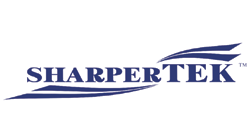Ultrasonic Cleaners for Small Businesses
|
Let Us Help We can help you
find the perfect storage unit for your needs and budget. |
Ultrasonic cleaners used by small businesses add efficiencies, lower costs, help meet strict standards, improve results and contribute to customer satisfaction
- for companies manufacturing specialty, complex or high-tech products that must meet exceptional standards for precision and cleanliness, and
- for businesses, clubs, professional and service organizations that manufacture, maintain and repair equipment requiring fast, efficient, and safe removal of grease, dirt and other contaminants throughout a product's lifetime.
How Ultrasonic Cleaners Work
Ultrasonic cleaning uses the power of what is called "cavitation" to loosen and carry away tenacious contaminants. Cavitation is the formation and implosion of microscopic vacuum bubbles as they contact surfaces immersed in an ultrasonic cleaning bath.
The process is more fully described in how ultrasonic cleaners work.
Ultrasonic Cleaner Applications for Small Business
Small businesses that employ ultrasonic cleaning are those that otherwise would manually clean with solvents, disinfectants or sprays, or use solvent-based washers. A sampling of successful applications includes
- reusable dental and medical instruments
- carburetors, gasoline and diesel engine parts
- printed circuit boards and electronics
- firearms (clean and lubricate)
- metrology tools
- brass hardware
- fuel injector nozzles
- lab glass and instruments
- paint gun nozzles
- precision metal parts finishing
More Info on Ultrasonic Cleaners for Small Businesses
Ultrasonic frequency
Ultrasonic frequency is a key selection criterion when operating ultrasonic cleaners for small business applications. It governs the size of the microscopic cavitation bubbles that remove contaminants.
In a sentence, low frequencies produce (relatively) large bubbles for intensive cleaning; as frequencies increase, bubble size decreases for more gentle cleaning. For details see selecting ultrasonic cleaner frequency.
Cleaning Tank Dimensions
Cleaning tank dimensions in length, width and depth (LWD) are provided by manufacturers. Keep in mind that the cleaning baskets (either furnished or optional) in which you place the products are smaller.
You'll want a tank size that allows baskets containing products to be fully immersed in the cleaning solution. The "working depth" of the tank determines whether parts can be fully submerged. Working depth is the distance between the bottom of the basket (not the tank) and the liquid surface in a full cleaning tank.
Features and Benefits
Ultrasonic cleaner features range from a simple on-off switch to highly sophisticated models allowing small businesses to customize their cleaning cycles. Here are some features and benefits for your consideration:
- Sweep mode. "Sweep" is an automatic +/- variation in the unit's set frequency to provide a more uniform distribution of energy thought out the bath. This avoids hot spots and dead zones that can result in uneven cleaning or possible damage to sensitive surfaces.
- Degas mode operates in an on/off cycle to remove cavitation-inhibiting trapped air in fresh cleaning solutions.
- Pulse mode provides brief spikes in power to remove stubborn contaminants or for mixing and sample prep. Pulse is offered on the Elmasonic Select series.
- Dynamic mode optimizes cleaning results by automatically combining the sweep mode for uniform cleaning with the pulse mode that removes stubborn contaminants. It is a feature found in the Elmasonic Xtra ultrasonic cleaners.
- Eco mode provides gentle cleaning and a quieter operation along with sweep. It is a feature found on the Elmasonic Select series.
- Dual frequency. This feature allows you the option of tailoring the frequency to the contaminants being removed or the physical properties of what is being cleaned. The Elmasonic P series offers dual frequency.
- Temperature controls allow operators to set the recommended cleaning solution temperature before beginning the cleaning operation.
- Timers allow operators to control the length of the cleaning cycle. Some units will initiate cavitation when the set temperature is reached; all will cease cavitation at the end of the cycle. Advantage: set the timer and attend to other tasks.
More information and help in selecting ultrasonic cleaner features is found in our frequently asked questions.
Selecting Ultrasonic Cleaner Chemistries
Ultrasonic cleaner chemistries, also called soaps or solutions, are designed for specific cleaning tasks.
Manufacturers provide detailed instructions on their use, including dilution, recommended cleaning temperatures, and safety data sheets (SDS) that detail chemistry, handling and disposal procedures.
Common classifications are emulsifying or demulsifying formulations, and by pH or acidity.
- emulsifying formulations keep contaminants in suspension where they eventually accumulate and begin to lower cleaning effectiveness.
- demulsifying formulations allow oily contaminants to float to the surface to be skimmed off and set aside for later disposal. This extends the useful lifetime of the solution.
- pH classifies the formula as acidic, alkaline or neutral with high pH values associated with alkaline and lower as acidic.
Whatever chemistry is used , tank damage can be avoided by removing contaminants that fall to the bottom each time the solution is changed. Tank cleaning procedures are important; instructions are provided by equipment manufacturers.
Selecting Acidic, Neutral or Alkaline Cleaning Solutions
Here’s a general overview on where these formulations find application. The examples given are but a few of the many choices available. We suggest that you thoroughly familiarize yourself with the products you plan to clean and the contaminants to remove before making a selection.
- For general purpose cleaning by shops working on engine and similar parts a widely used formulation is demulsifying Elma tec clean A4 to remove oil, grease, and other contaminants from a broad range of surfaces. Choose this solution when cleaning parts made of several different materials with varied contaminants.
- For removing light oil, grease, fluxing agents, dust and fingerprints from electronics and fine optics, mildly alkaline emulsifying Elma tec clean A1 is a good choice.
- Brighten brass and copper items with ammonia-containing Elma tec clean A2.
- An example of a neutral formula is Elma lab clean N10 to gently clean metals, plastics, ceramics, glass and rubber. Use this solution to clean aluminum parts.
- Mildly acidic emulsifying Elma tec clean S1 takes rust, lime, oxide films, grease and oil from nonferrous heavy metals, stainless steel, aluminum, brass and plastics among other surfaces.
- Because most cleaning solutions are water based there may be a concern about rusting. Elma KS provides temporary corrosion protection on a molecular level.
More details on this important topic is provided in our cleaning solution selection tips.
Useful Accessories Boost Cleaning Efficiency
Investments in multifunctional ultrasonic cleaner accessories quickly pay for themselves by extending the versatility of your ultrasonic cleaner.
The extensive range of accessories allow secure positioning of parts and samples of virtually any shape. Other accessories reduce noise and liquid evaporation, enable improved temperature control, or remove particles to increase solution lifetime.
Check ultrasonic cleaner accessories for a comprehensive list of equipment.
Specialized Ultrasonic Cleaners for Small Businesses
The scientists at iUltrasonic have identified specialized ultrasonic cleaning kits and equipment designed especially for specific purposes. Links provide usage tips for the equipment.
Liposomal Vitamin C Preparation Kits
How to use an ultrasonic bath to prepare liposomal vitamin C
Firearm Cleaning Kits for Law Enforcement, Shooting Clubs and Gun Owners
For tips on firearm cleaning check ultrasonic gun cleaning systems.
Beaker Kits for Cleaning with Volatile Solvents
Our best practices post provides important safety procedures for cleaning with volatile solvents.
Ultrasonic equipment for sieve cleaning and sample prep
Contact Our Small Business Experts with Questions
We hope this post is helpful in selecting an ultrasonic cleaner and supporting chemistries and accessories to support your business. Contact our scientists for unbiased help.






